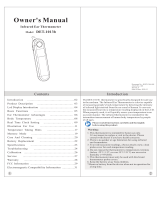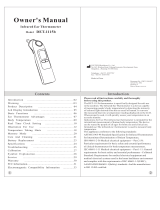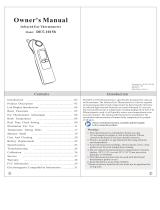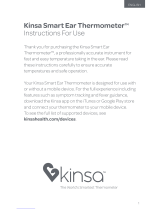
4
The Braun ThermoScan thermometer has been carefully developed
for accurate, safe and fast temperature measurements in the ear.
The shape of the thermometer prevents it from being inserted too far
into the ear canal to hurt the eardrum.
However, as with any thermometer, proper technique is critical to
obtaining accurate temperatures. Therefore, read the use
instructions carefully and thoroughly.
Important
• The operating ambient temperature range for this thermometer
is 10–40 °C (50–104 °F).
• Do not expose the thermometer to temperature extremes
(below –20 °C / –4 °F or over 50 °C / 122 °F) nor excessive humidity
(> 95 % RH).
• This thermometer must only be used with genuine Braun
ThermoScan Lens Filters (LF 40). Never use this thermometer
without a new, clean lens filter attached.
• Keep lens filters out of reach of children.
• This thermometer is intended for household use only.
• Use of this thermometer is not intended as a substitute for con-
sultation with your physician.
How does Braun ThermoScan work?
Braun ThermoScan measures the infrared heat generated by the
eardrum and surrounding tissues. To avoid gross temperature dif-
ferences, the sensor itself is brought to a temperature close to that of
the human body. When the Braun ThermoScan is placed in the ear,
it continuously monitors the infrared radiation. The measurement will
be finished and the result is displayed, when an accurate reading can
be assured.
Why measure in the ear?
The goal of thermometry is to measure core body temperature which
is the temperature of the vital organs. Ear temperatures accurately
reflect core body temperature, since the eardrum shares blood supply
with the temperature control center in the brain, the hypothalamus.
Therefore, changes in body temperature are reflected sooner and more
accurately in the ear than at other sites.
• Axillary temperatures only measure skin temperature and therefore,
are not a reliable indicator of core body temperature.
• Oral temperatures are influenced by drinking, eating and breathing.
• Rectal temperatures lag behind changes in core body temperature
and there is a risk of cross-contamination.
English
6022435_IRT_Korea_S4-30 Seite 4 Donnerstag, 24. August 2006 2:30 14
























